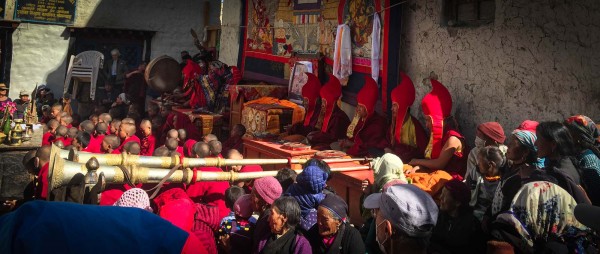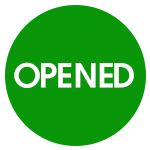Important Information
Region
Mustang Region Treks
Duration
17 Days
Max Altitude 4200 Meters
Best Season Spring, Summer & Autumn
Activity Per Day
4-5 Hours Walk
Grade
Level 3
Group Size
2 - 12 people
Transportation Bus/Jeep
Upcoming Yartong will be celebrated on the 17th 18th and 19th of August of year 2026.”
Yartung is a Tibetan word that means (Yar=summer) and (Tung=let it). Mid of summer is considered the best season in Upper Mustang where the people get free from their normal agricultural task and they utilize the free time for celebration. The entire youngsters gathered with their friends and go for a picnic where the weather is fine and greenery surrounds the villages. Yartung is not only horse riding but it is also about the feast of drinking Chang (local wine from wheat), dancing, singing, and racing their sturdy Tibetan ponies.
The celebration begins by a short ceremony inside the walled city. Then, for three days (first day for men, second for women, and third for monks) they ride their horses from the town’s gate towards the east and spend the day on the fields eating, drinking, and entertaining each other’s with traditional Loba (people of Lo), Tibetan songs and dances under a tent. Each member of a family has to participate in this festival. In the late afternoon, the riders race the horses but also perform feats of skill across the fields straight to the village. Here, the town folks watch as the riders’ race begins. While riding at full speed, they scoop up Tibetan blessing scarves from the ground or throw rocks at stationary targets. The riders will hang from the horse, one leg hooked on the saddle, the other dragging the ground, with both arms stretched out or waving.
The Yartung (Horse Racing) Festival will provide you an opportunity to take part in festivities with the local people of Mustang. People come out in the finest local dress to enjoy the races. If we are fortunate we will have a chance to join the Prince of Lo King and his friends for the races. There will be plenty of activities like dancing, horse racing, celebrations, singing, gambling and a good time by all. The August full moon day is marked for the horse festival, locally known as Yartung.
Are you looking for local travel agency to organize your Yartung Festival Trip to Upper Mustang?
Here we are. We have been organizing this trip since many years. The date for Yartung Festival 2026 is already updated. The festival will be celebrated on the English dates of 17th, 18th, and 19th August of 2025.
Upper Mustang Yartong (Horse racing) festival with Himalayan Wander Walkers is designed to explore and observe the unique culture, tradition, and lifestyle of the remote and mysterious land of Upper Mustang – Lo Manthang. The trekking season in Nepal is in spring and autumn whereas if you are thinking to get in Upper Mustang; the Summer season is the best because the Mustang region is the desert of Nepal so this part is not affected by the rain. We organize trekking for Upper Mustang in the following seasons with tailor-made itineraries.
- Summer: August and September.
If you are looking for a different itinerary than the itinerary here please Customize Your Trip
Highlights of Yartung Festival of Mustang
- Explore the 12th-century old living culture of Lo-people in Upper-mustang
- Participate in the local celebration of horse riding, local dance, and songs, and feel a unique culture.
- Witness a Tibetan-derived culture with a unique landscape
- Explore the centuries-old stones Mani wall and Monasteries
“Come and enjoy the Kentucky Derby of Mustang, so-called Yartung.
Include
Airport pick up and drop off
Taxi/bus to the start and end of the trek
English-speaking government license holder trekking guide
One porter for two persons
Trekking guide’s and porter’s insurance during the trip
Annapurna Consercation Area Permit and TIMS trekking permit
Mustang special permit USD 500
All land transportation mentioned in the itinerary.
Hotel in Kathmandu, Pokhara and Jomsom
All Government and local taxes.
Arrangement of emergency evacuation service (should have insurance for emergency evacuation and will be paid by your travel insurance company)
Accommodation during the trek
All Meal during trek (Breakfast, lunch and dinner)
Sightseeing entrance fee
Flight from Pokhara to Kathmandu
Exclude
Personal Expenses
Drinks except Teas
Personal trekking equipment
Travel/medical insurance
Phone calls
Emergency rescue evacuation Expenses
Photography and video charge
Internet
Monastery entry fee
International air ticket
Tips for your trekking guide & porters at the end of the trek
If you’re forced to extend your trek due to bad weather or natural disaster circumstances, we are not liable to pay any compensation or otherwise be responsible for any expenses you may incur
Anything not mentioned in the ‘includes section’
Route Map

Important Information
CHECKLISTS FOR YARTUNG FESTIVAL TREK
- Valid passport (valid for six months from the date of your trip)
- MasterCard, Visa Credit, and Debit Cards are accepted in Nepal. However, some cash is highly recommended.
- Mobile (if your cell phone is from CINGULAR USA or ATNT (USA) operators, then your cell phone will work in Nepal.)
- Clothing (Layered clothes, windproof and waterproof jackets, fleece pullovers, thermal base layers, hiking pants, shorts, headwear, footwear, and other items according to your needs)
- Personal Items and Toiletries (First-Aid Kit, Iodine tablets or a UV purifier to treat water, Sun Protection)
- Travel and Health Insurance
- Trekking gear and equipment(if you have your own trekking gear and equipment, such as trekking poles, sleeping bag, and shoes, then you can bring them; else you can rent them in Thamel, Kathmandu). Read more for trekking gears and peak climbing gears.
Guiding, Food, and Lodging
In Nepal, all trekking supplies - Teahouse trekking means staying and eating in local lodges. We stay in single rooms where possible, but often you will have to share. The rooms are basic, normally just a bed with a pillow, blankets. A few have electric lights and all have a spacious dining room-lounge. We eat at teahouses and, although the food is usually plentiful and delicious, the menu is not expensive. They offer a variety of potatoes, rice and noodle dishes, as well as soup and seasonal vegetables. Beers and local spirits are often available, but that will be at your own cost. A variety of cereals, bread, and egg dishes are generally available for breakfast. There are also snacks available such as basic biscuits, chocolate, and soft drinks and in some areas, you will find fresh fruit in season. It is normal to meet your porter in the teahouse where you will stay overnight. So, pack your necessary things in your own day pack.
DRESS CODE FOR VISITING MONASTERIES, AND TEMPLES IN NEPAL
- Shirt (either half or full sleeve)
- Full pants/long skirts
- Any type of shoes with socks
- No Hats, No Umbrella, No Slippers, No t-shirts, No short skirt, and No half-pants
- Photographs allowed in the courtyard only.
Note regarding itineraries
Although we generally adhere to the schedule, the itinerary is subject to change for numerous reasons beyond our control, including weather and terrain conditions, suitable campsite availability, and the group's general fitness level. It is important to understand that our trek is logistically complex and it is not unusual that adjustments be made. Our guide will orient you each evening to the following day's plan; their good judgment is the key to the long history of successful treks that Himalayan Wander Walkers has led till now. Please remember that our ability to make adjustments as needed helps to ensure that your trek is successful.
Frequently Asked Question
Yartung is a Tibetan word meaning "Yar (summer) and "Tung (let it). This festival is celebrated when the people are free from their normal agricultural tasks and utilize their free time for enjoyment and festivals mainly during the mid-summer.
The Yartung festival lasts for three days (the first day for men, the second for women, and the third for monks). Participants ride their horses from the town’s gate towards the east and spend the day in the fields, enjoying food and drinks and entertaining each other with traditional Loba (people of Lo) Tibetan songs and dances under a tent. Each family member must participate in this festival.
Yes, the Yartung festival in the Upper Mustang Package can be customized to meet your needs. We can modify the itinerary based on your preferences, whether you want to shorten or extend the trek or add extra rest days. If you're interested in specific destinations, such as monasteries or villages, we can adjust the route to include those as well. Just let us know what you're looking for, and we’ll be happy to accommodate your wishes: “Customize Your Trip.”
Yes, you need a Restricted Area Permit and an ACAP Permit to enter Upper Mustang, which can be easily obtained from a government-licensed company in Kathmandu or Pokhara. These permits are required to ensure safety and preserve the region’s unique culture and environment. Read more about trekking permits and their cost in the Mustang Region.
Altitude sickness can occur in regions above 2,500 meters, and the Yartung festival in the Upper Mustang Tour takes you to elevations over 4,200 meters, so you might face some symptoms of altitude sickness, and acclimatization is important. This tour is designed with rest days to help you adjust. Staying hydrated, avoiding exertion, and listening to your body are essential. If symptoms of altitude sickness occur, your guide will assist in descending to a lower altitude for recovery.
Yes, you can explore additional locations and extend your Yartung Festival tour. You can visit various villages, caves, and monasteries in Mustang or take a trip to Muktinath, Jomsom, Tilicho Lake, Larkey Pass, and many more.
Apart from the Yartung Festival, one can also witness the Tiji Festival, also known as the Tenpa Chirim among the locals, which is celebrated a month before the Yartung Festival.
No questions found matching your search. Try different keywords or browse all questions above.
| {{type.min}} - {{type.max}} Pax {{type.name}} - {{type.desc}} | {{type.display_price}} per people |
Extra prices:
Let us help you decide Inquiry
You might also like

- 17 days
- Mustang Region Treks
Tiji Festival in Upper Mustang
Are you looking for local travel agency to organize your Tiji Festival Trek to Upper Mustang in the year 2026 and 2027? The date for Tiji Festival Trek 2026 and 2027 is already updated. The Tiji festival Trek year 2026 will be celebrating on the 13th, 14th and 15th May 2026. According to the...




